June 9, 2007
Nagoya
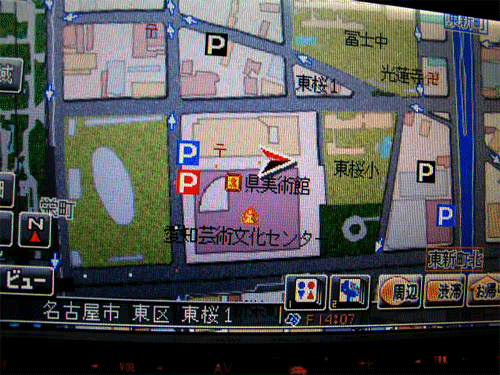
I took the bullet train from Tokyo Station to Nagoya to spend some time with Hiroshi and see his new studio. It's pretty easy to get around in Japan, surprising since there are few signs in english to help the gaijin to get around. But maybe all one needs in Japan is a couple of signs, some color coding and helpful people at the information counters to get around... and a good friend that will drive you to the city center to see somthing interesting at the local museum.
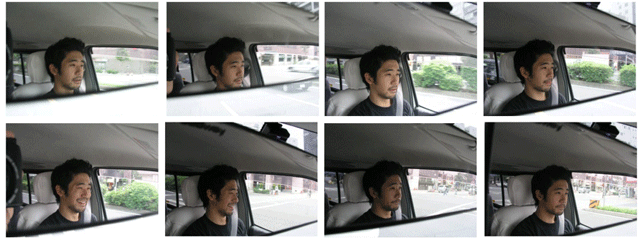
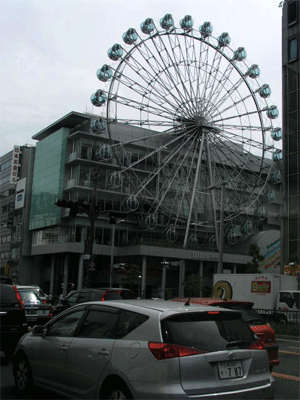
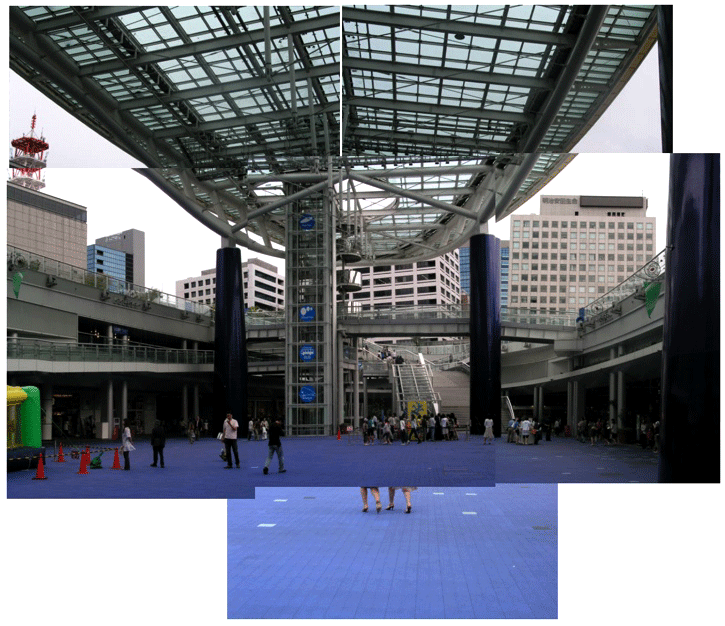
There was a painting that Hiroshi wanted to show me at the Aichi Prefecture Art Center. The Price Collection was touring the "Jakuchu, & the Age of Imagination" and one particular one is worthy of a pilgrimage to see It? JAKUCHU's "Birds , Animals , and Flowering Plants in Imaginary Scene" from the 18 th Century:

I have a book bought from the museum bookstore featuring this painting, and rough fotos of the overall are here, and details here, here, here, and here.
The paintiing is on two folding screens, each about as long as my "Colossus". The books that I had bought of this artist (Jakuchu) indicate that this particular painting was an anomoly (Hiroshi told me that there are only two of this kind for Jakuchu) and in this collection, I saw two other works by Jakuchu that also seem anomolous when I scan the catalogs. The story was that Jakuchu would keep several roosters and study them intensively, painting studies of them exhaustively. I began to see a strategy of representing the world in similar terms: assemblages of a variety of plumages, something that I could relate to in that my paintings also preserve a certain integrity of each mark made within them.
I realised that Hiroshi was focused on the anomolies. Amidst so much accomplishment, excellence in technique, the legendary Japanese intensity of mastery, the stand outs are the knuckleheads and mavericks. Hiroshi pointed out to me the goofs, awkward passages and sheer dumb moves in some of the work on exhibit. It was the cracks in the seams of apparently seamless virtuosity where he found the greatest inspiration.
Later on as we cruised the rest of the building, we checked out the rental galleries that we made available to the general public. I got to see the legendary parallel art world that exists alongside the one that we know of worldwide and in history. I like to say that there are many artworlds and here in Japan this is true in spades. The idea that there are multiple artworlds is eventually organized by a distinction of whether an over arching dialog of art history is being entertained or not. Those who do not incorporate a version of that dialog risks being categorized with the status of an outsider. If you fly your freak flag wildly enough, you might be someone like Henry Darger. If not, you can live a wonderful life, but other art worlds might not care what you do. Parochialism supercharged on steroids.
In Japan, the other artworlds that live so stubbornly without a care about this dialog of art history (that which we get in ready made form in grad school) enjoy an uncommon vitality: they have collectors, galleries, critics, museums... what do they care about this thing called the larger and "more authoritative art dialog"?
And what is interesting is that this outsider artworld inside Japan serves as a kind of laboratory for the cultivation of strange new formal moves, art wise. Hiroshi toured me through the other galleries in the building, ones that are usually rented by artists in this other art world. They would sit their own shows, clicking off the number of visitors with that pensive anxiety that is all too familiar to those of us who pretend we don't feel such things at our own shows. Hiroshi would peruse the shows and savor the naive parts, mushrooms of vitality sprouting in the odd corners of a forest of cliche. "Isn't that wonderful?" he would beam.
***

Later in my Nagoya visit, Hiroshi took me to the outskirts of town where he has his other studios and where he teaches at the local university. As far as I could tell, Nagoya has an urban zoning scheme like Houston: none to speak of. This part of his neighborhood outside the municipality proper was an industrial zone, but the scale of business was beautiful to me in terms of their small scale. And the mixture of residential, retail, factory and farm was lovely to my eyes.
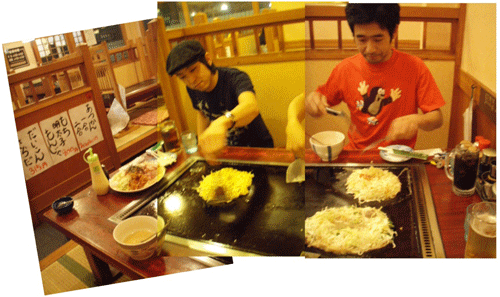
My final night in Nagoya was celebrated with a dinner called "Monja", a meal made popular in post war times when food shortages prompted mothers to create a dish for their children returning from school in the afternoon who were hungry for a snack. A pile of cabbage on a hot plate, half a baby's fist of meat (what used to be left overs) and a bowl of water mixed with wheat flour. As the cabbage softened, a moat is made and the wheat water is poured and allowed to congeal and crispen. Large spatulas manage the pile and small spatulas were used to press and sear bits into the cooking surface, sticking the bits onto the utensil to eat in small bits. The whole event was tricky to manage and I imagine that this kept the kids busy while satiating their hunger without stuffing them with food. It was a great meal that I found quite satisfying without that voluminous bloat so familiar stateside.
Leave a comment